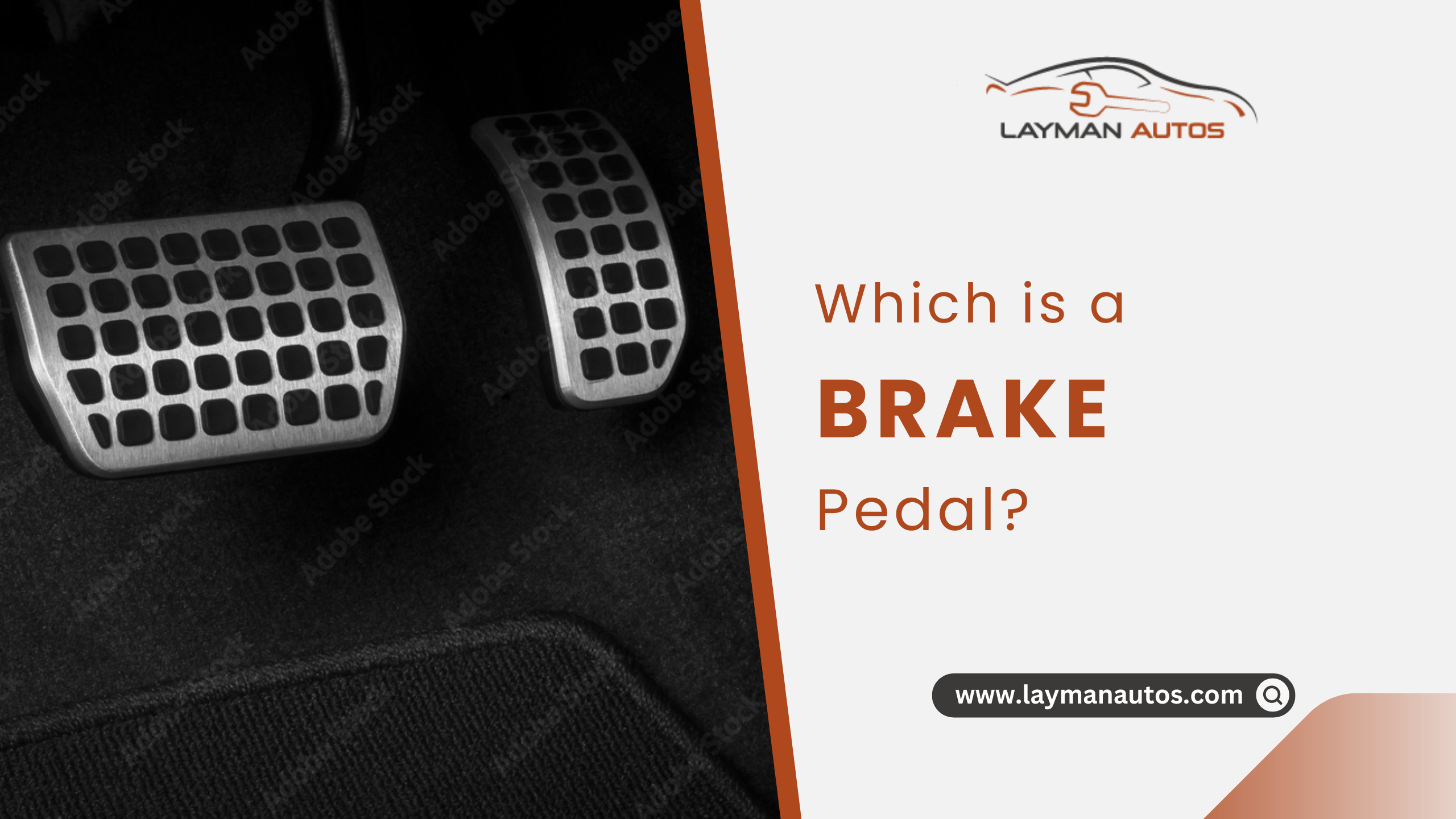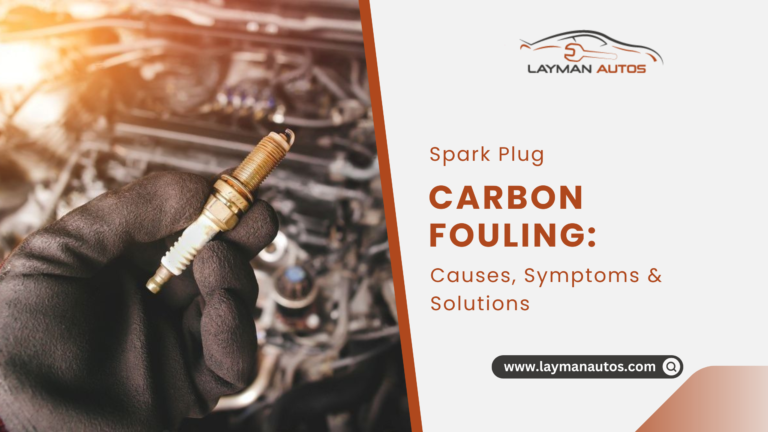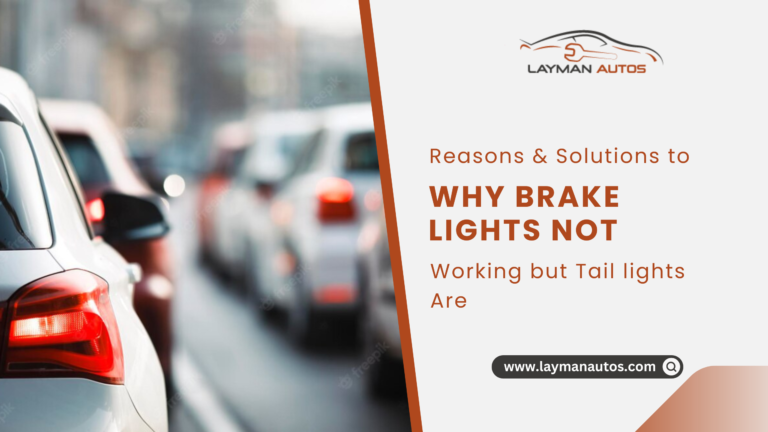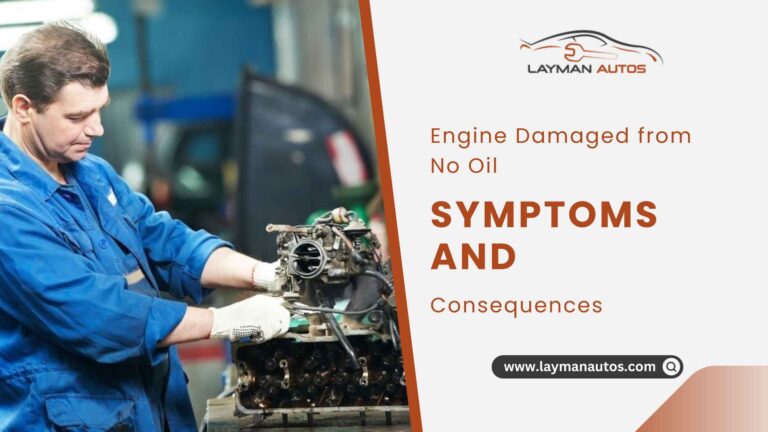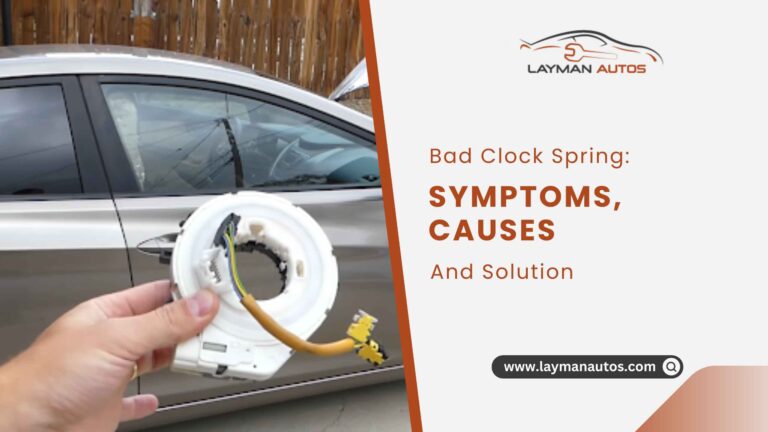Which is a Brake Pedal?
Driving is both difficult and simple. You may struggle with the steering wheel, the gear shifter, and the pedals while you learn to drive. Once you get how the system works, though, it’s a breeze.
The differences between the clutch, brake, and gas pedal might be confusing to novice drivers. Some people may inquire, “Which is the brake pedal?” Both automatic and manual automobile learners should know the answer to this important issue. So when they need to slow down, they won’t accidentally step on the gas. If not, it might cause a major crash.
In this piece, you’ll learn how to identify the brake pedal in a manual transmission vehicle. You’ll also be able to tell the difference between the gas and clutch.
Which One is the Brake Pedal?
When pressing down on the brake pedal, you can slow down or stop the car. In a car with an automatic transmission, it’s on the driver’s side, on the left. It’s as crucial as the accelerator is for safety reasons
Although others may disagree, I believe that a well-functioning brake is of more significance than both engine speed and torque.
Which is the Brake Pedal – How Do You Stop and Go?
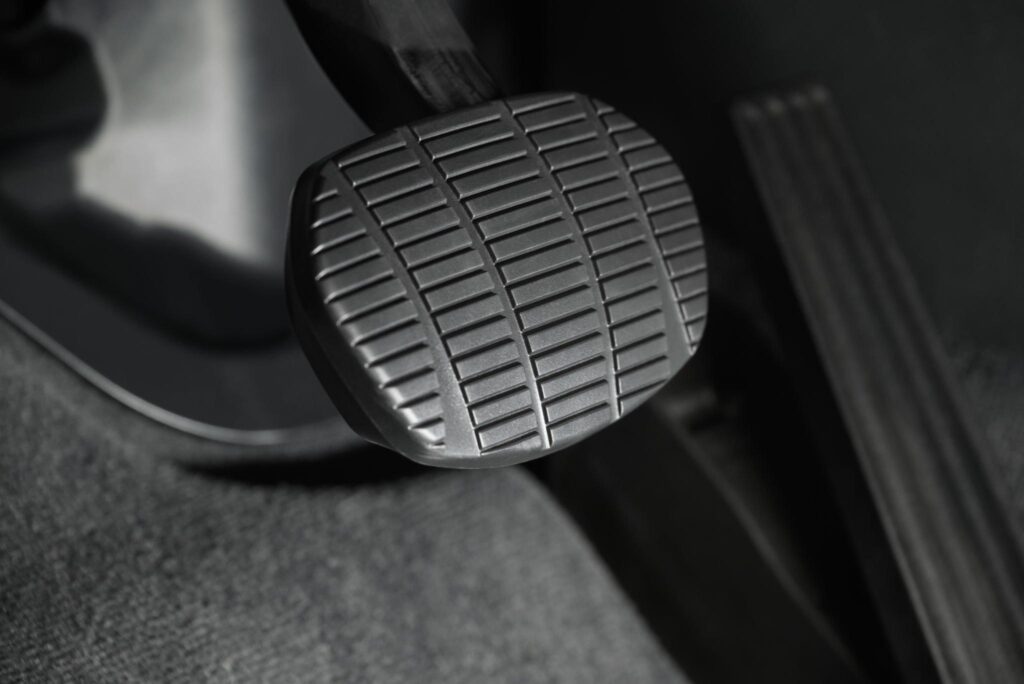
While learning the ins and outs of a car’s controls may seem daunting at first, we assure you that the rewards will be worth the effort. The fact is that real-world driving is much more difficult than any driving simulator. So, if you’re just starting out on the road, you’d better know where the brake pedal is located in an automatic vehicle.
Brakes and gas are the only pedals needed for automatic vehicles. In an automatic, the left footrest controls the brakes, while the right footrest operates the accelerator.
Similarly, if you’re starting to drive a manual automobile, you need to know which pedal controls the brake. In a manual transmission vehicle, you’ll need to use all three pedals to move the vehicle forward:
- The clutch,
- The brakes, and
- The gas.
If you’re driving a manual transmission vehicle, you’ll find the clutch pedal on the left side of the floor, the brake pedal in the middle, and the gas pedal on the right.
Are the Legal System and the Car Industry Making the Call?
It is mandatory for Japanese automakers to meet international safety requirements if they want to sell their products internationally. They must adhere to all regulations pertaining to motor vehicles on the road. These regulations come from Japan’s Ministry of Land, Infrastructure, and Transport.
Rules for pedal location, however, are not particularly complicated. Anything else is fine, but the accelerator, brake, and clutch must all be within 500 mm of one other. It is essential that it be positioned in the middle of the wheel. Because of this, the driver may remain in one place while maintaining control.
Therefore, the pedal placement must have been agreed upon between manufacturers. In a world without regulations, the arrangement of pedals on any given vehicle may be from any nation. However, this is not exclusive to Japan.
What’s the Distinction Between the Gas and Brake Pedals?
When the gas pedal is depressed, the car will accelerate to its maximum possible speed, whereas the brake pedal will only stop halfway unless the brakes fail. Mistaking one pedal for another or believing you’re braking are the most common causes of sudden acceleration.
When sitting in the driver’s seat, reach over to the right side of the vehicle to access the accelerator. The parking brake is on the driver’s left.
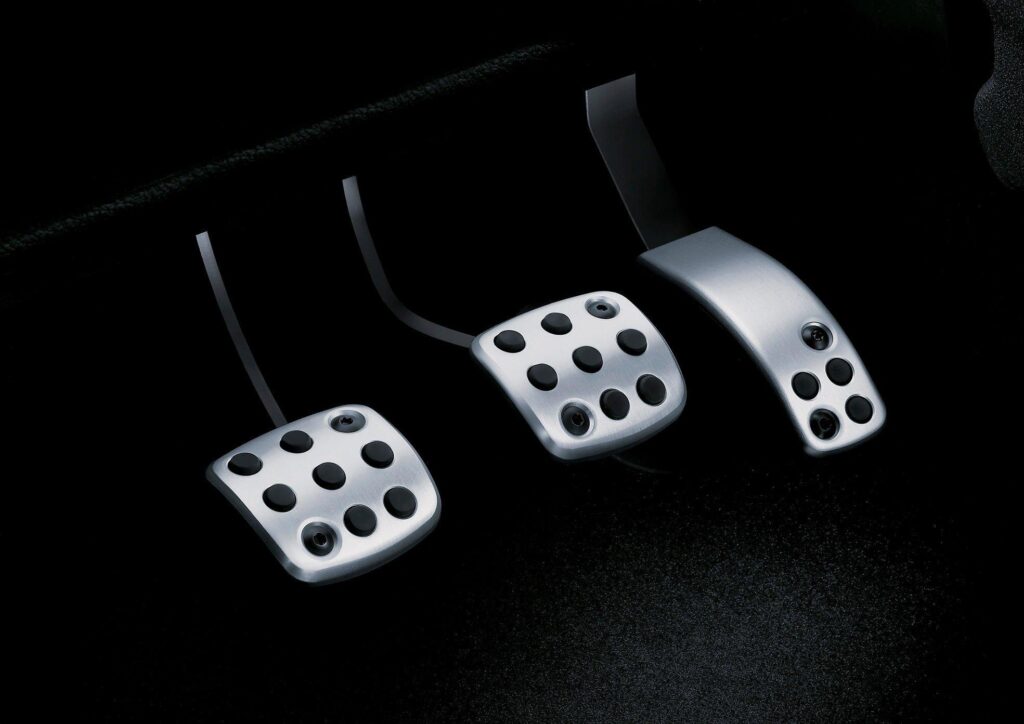
Both pedals are used with the right foot. To put it simply, when you press down on the gas pedal, you are effectively feeding your engine gasoline and forcing it to speed up. If you press down on the brake pedal, the car will slow down and stop when you release your foot from the pedal.
What the Gas and Brake Pedals Do
If we want our automobile to go without a hitch, we need to find a happy medium between the throttle and brake pedals.
The Role of The Gas Pedal
Vehicles with accelerator pedals allow their drivers to regulate the speed at which their engines operate. It’s the one on the floor to the right. The gas pedal controls the fuel flow to the engine and, in turn, the speed of the vehicle.
The Role of the Brake Pedal
The fundamental function of the braking system is to reduce the vehicle’s speed. When you press the brake pedal, the brake pads strain against the rotor on the wheel, creating friction and slowing the vehicle.
To slow down a vehicle, its braking system uses mechanical or electrical means to store the kinetic energy it generates. In mechanical brakes, friction is used to convert kinetic energy into thermal energy. Electric brakes work because an electric current causes a magnet to apply the brakes.
When and How Do You Press the Brakes?
As was just discussed, pressing the brake pedal will cause the vehicle’s speed to diminish and finally stop the vehicle. To change gears in an automatic vehicle, you must first press the brake pedal after starting the engine.
When applying pressure to a brake pedal, do it with the right foot (knee pointing toward the ground). In doing so, you’ll force the brake pads against the rotors by pressing on the hydraulic fluid within the braking lines. Depending on how much force is given, the car will either slow down or stop.
How Do I Remember the Gas and Brake Pedal?
There have been fatal accidents caused when novices confused one pedal for another. The roadway is no place to have a pedal mix-up, and I know that. You might be wondering, though, whether the brake pedal goes on the left or the right. How do you keep the difference between the gas and brake pedals straight in your mind?
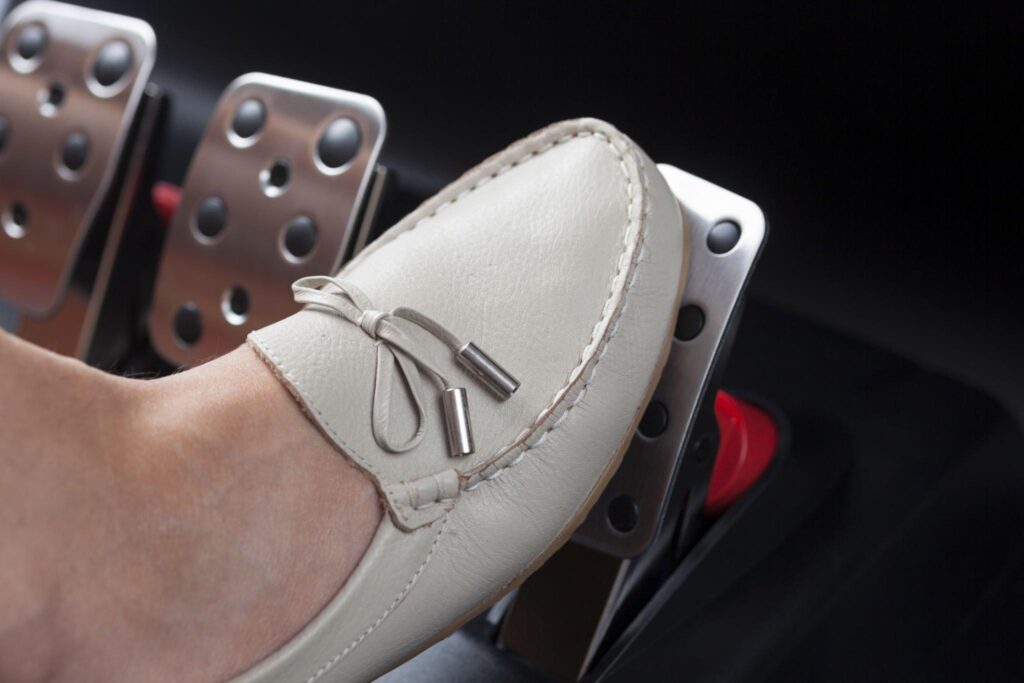
One easy way to memorize the order of automobile pedals is to count them backward, from right to left, using the ABC method.
- The letter A denotes the term “Accelerator.”
- The letter B denotes the term “Brake.”
- The letter C denotes the term “Clutch.”
For easy recall, consider that the accelerator is often higher up on the dashboard than the brake or clutch. Meanwhile, the accelerator pedal is narrower than the brake and clutch pedals. Last but not least, the brake pedal is more difficult to press than the clutch pedal.
Where Should the Gas Pedal Be Located, on the Left or Right Foot?
There are often two pedals on the floor of an autonomous car. The car’s gas pedal is on the driver’s right. The lift is also where you’ll find the brake. You are able to use both pedals with your right foot. We think it’s only logical that, right now, most automobiles all have the same pedal arrangement.
That’s why you can speed up by flexing your ankles, but stopping requires you to stretch your whole leg. The accelerator pedal has been increased to reduce the likelihood of accidental depressing when braking. As the brake pads wear out, the pedal height should be raised. Here are a few tips on how to control gas and brake pedals in a car:
Is the Brake On the Left or Right in a Car?
The accelerator is on the right, not the left. If you’re driving, the gas pedal is on the right (the slim one), and the brake pedal is on the left (the broader one). Therefore, the right pedal is the accelerator in both two- and three-pedal cars. You might be wondering which brake pedal is part of which braking system. It is a part of the service brake system.
Which Three Pedals Do Cars Use?
The clutch, the brake, and the gas pedal make up the driving controls of a manual transmission vehicle. Similar automated vehicles just use a brake and gas pedal. In order to connect or disconnect the clutch from the engine, the driver must utilize the clutch pedal. To slow down or stop, press the brake pedal; to speed up, press the gas pedal.
How Can You Drive a Car Without Using the Center Pedal?
The brake pedal is located in the center of a manual transmission vehicle’s pedal set. Alternatively, the left pedal is used in automated vehicles. When the engine is shut off, it is noticeably more difficult or weighty to use than the other two pedals.
Final Words
All of your questions concerning which one is the break should be answered now. Just to review! When compared to the gas and accelerator pedals, the brake pedal is much heavier and stiffer. Whether you drive a manual or automatic automobile, the clutch is always in the middle of the floor.
Frequently Asked Questions
Can You Drive an Automatic Car with Both Feet?
The right foot is the one that controls the brakes and the accelerator during typical driving. If you brake with your left foot and speed up with your right, you might accidentally do both at once and lose control of the vehicle.
You’ll know to use your right foot for the brakes and the accelerator if you’ve never driven a manual automobile before, and vice versa. You may easily confuse the brake for the clutch if you go from driving a manual transmission to an automatic.
If you are doing a maneuver, such as parking or one of the driving test exercises, or stopping and starting in very slow-moving traffic, you can use both feet. Some drivers find that they have more success and more precise control of their vehicle when they use both feet during a maneuver.
You might find a lot of reasons why you should not use both feet to drive your car.
What Pedals Do I Use for the Brake and Gas in an Automatic Vehicle?
Simply said, an automated car has just two pedals instead of three. The brake is on the left side of the steering wheel while the accelerator is on the right. Both pedals are under the control of the right foot.
What’s The Deal With My Accelerator Not Working?
If the gasoline filter in your car is clogged with debris, then the engine will not obtain the fuel it needs to run. Problems may arise if you try to speed while this is happening. Another potential culprit is a dirty air filter. The inability to get the optimal air-fuel combination results from a clogged air filter, which slows acceleration.

